As you walk along Dupont Circle (a busy traffic circle, park, neighborhood, and historic district in Washington D.C.), you come across a red pole near a Starbucks and CVS. Upon further inspection, you realize that this red pole marks a staircase down into what seems like it could be a Metro station, but minus the recognizable escalators of the D.C. Metro system. On either side of the stairs is graffiti, but it seems welcomed. At the bottom of the stairs is a set of doors.
Yesterday, our group descended down the graffitied stairs and through the doors, where we were greeted by a Dutch man wearing a suit jacket and standing at a white desk.
Welcome to Dupont Underground.
The man who greeted us at the bottom of the stairs was Robert Meins, the CEO of Dupont Underground. He would be our guide for the next hour or so, showing us the art on the walls and a photograph exhibit, and telling us about the history of the organization. Plus, he would show us terrifying tunnels at the end of our visit!
We spent an hour and a half there and I still don’t fully know how to explain what this place is, so I’ll let the website do that for me. According to the Dupont Underground Mission and Vision statement:
Dupont Underground is non-profit a community arts organization run almost entirely by volunteers. Our goal is to be committed to developing a multidisciplinary platform for creative expression. We strive to reflect the diversity of our community – both artists and audiences. We endeavor to host projects and work that might not be an easy fit in more conventional venues.
That’s what it is today, but the space wasn’t always a hip, unique underground arts space. The 75,000 square foot space that is currently Dupont Underground has a pretty wild history. In 1949, it actually opened as a trolley station, but the platforms and tunnels were closed off in 1962 when D.C.’s streetcar system shut down. After that, it was made into a fallout shelter in the late 1960s before becoming a food court (with a very short lifespan of nine months) in the mid-1990s. Once the food court closed, the space was abandoned until 2016 when it was repurposed and became Dupont Underground.
Robert began the visit by showing us around the main area, which is one side of the underground space. It is a mix of performance spaces with chairs and stages, as well as a photo exhibit for the World Press Photo. They have the photo of the year for decades displayed on tables, a theme of political protest and unrest resonating throughout the images.
Most of the images can be traced back to some sort of political event, whether it be increased immigration laws here in the US or civil wars in other countries, sparking conversation and further dialogue from viewers.
The walls lining the space are full of graffiti art and murals that each follow a theme of international, women, or “core” D.C. At the end of our formal visit, Robert asked if we would like to go into the tunnels on the other side of the underground – basically, un-renovated, pitch black tunnels! We agreed and spent the next 30 minutes walking through what looked like a post-apocalyptic scene, with run-down food court stands leftover from the 1990s and very few lights. Wires hang down and the floor is covered in wood planks; basically, it’s a complete mess that has yet to be renovated (pending funding). You bet we all had our phone flashlights out for that one!
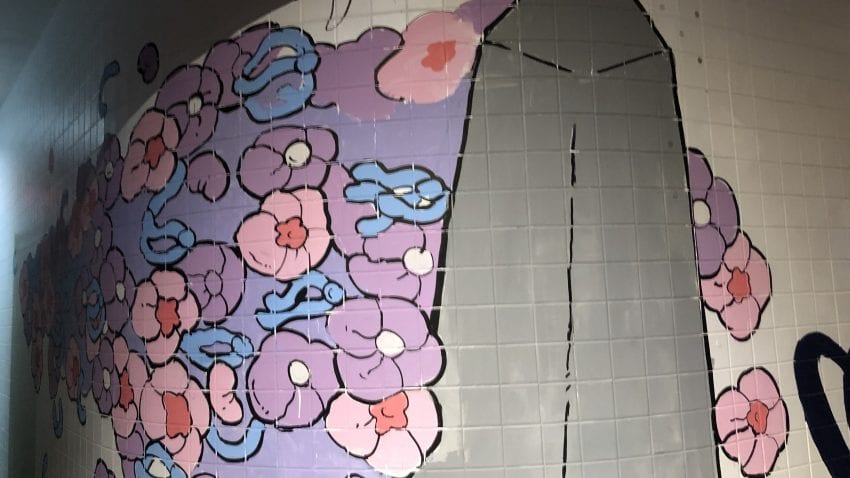
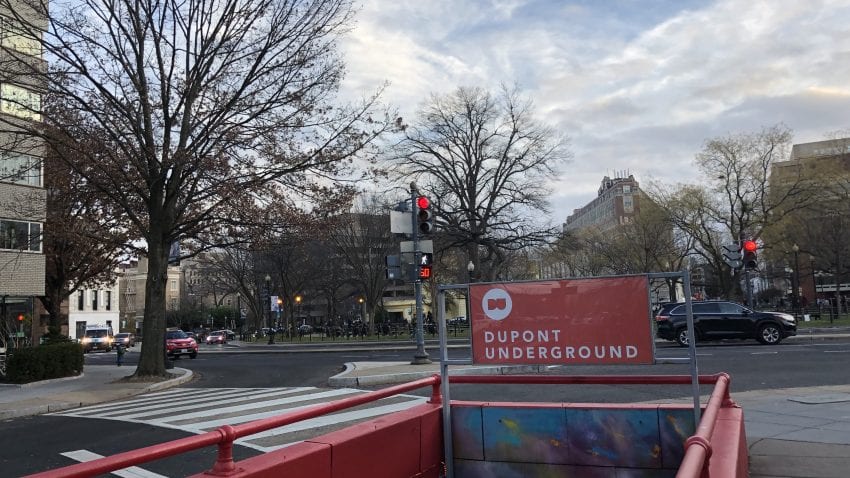
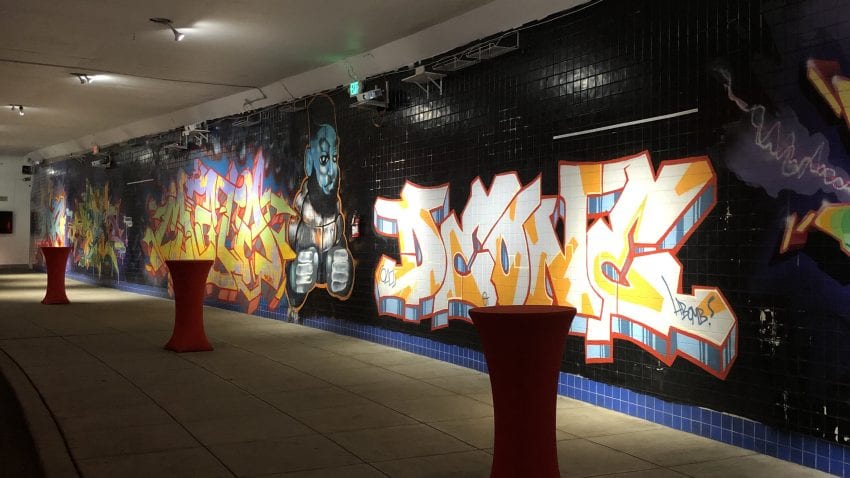
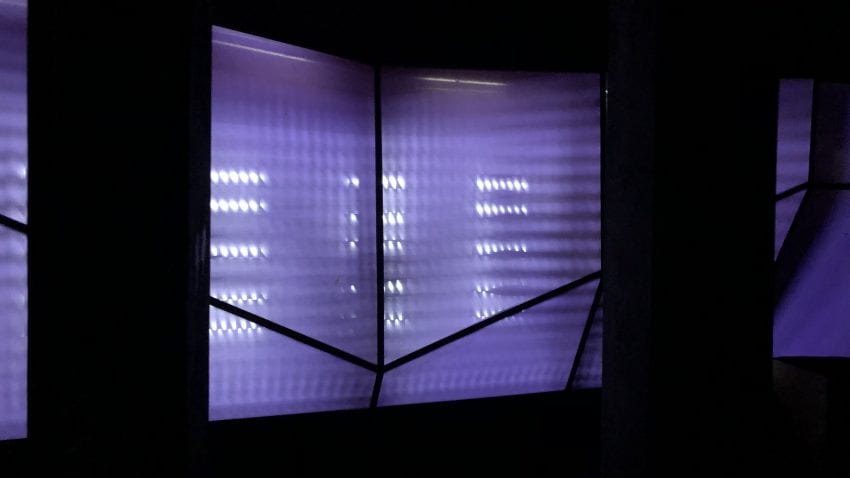
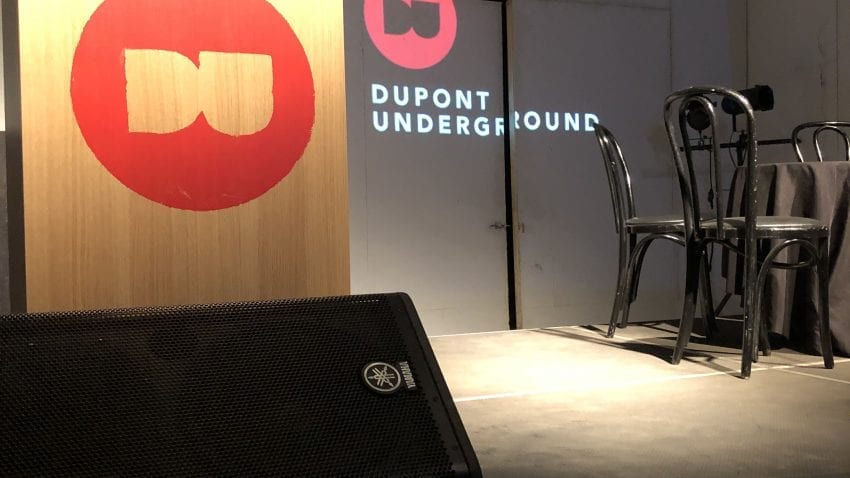
One of the small stages
Now, we’ve only been in Washington D.C. for a week, but this was by far the most unconventional, unique place we’ve seen yet. But I want to further explain what I mean by “unconventional.” Compared to other art museums and organizations we’ve seen, Dupont Underground was edgy and had a character unlike the government-funded museums in Washington D.C. As it is not funded by the government, it is able to be less apolitical or politically “neutral,” as displayed in the photo exhibition. In short, they can make political statements.
But I almost found Dupont Underground to be more “democratic” than some of the Smithsonian museums, even the National Portrait Gallery we visited this morning, despite the fact that the National Portrait Gallery is a government-funded museum and Dupont Underground is not.
At Dupont Underground, there is not a fear of losing government funding and they don’t feel like they have to suppress any viewpoints in order to keep government funding. If the organization doesn’t have any government funding in the first place, they don’t have to worry about pleasing the government in order to keep it. Dupont Underground has taken the liberty to be “funky,” hence the title of this blog post. They’ve allowed themselves to be different, make political statements, and embrace unconventionality.
But, that comes with a cost. We’ve been talking a lot about arts accessibility since we’ve been here and Dupont Underground is, put simply, not accessible to wheelchairs at the moment. There is a “ramp” by the entrance, but I add quotes by that word because it was absolutely not ADA compliant. Someone compared it to more like a roller coaster than a ramp. However, Robert discussed that it would cost about $80,000 to put in a proper ramp or elevator, but the organization only brings in about $27,000 per year. He also informed us that they can’t truly get investors as they are on a lease – no investors will want to invest half a million dollars into a space that may not exist in a year. However, perhaps if Dupont became more apolitical, they could receive some sort of funding from the government, at the expense of risking their mission statement and self-proclaimed unconventionality and political nature.
In my opinion, Robert is making the right choice in keeping Dupont funky. While I think that Dupont’s first priority should be making it accessible to all, Washington D.C. has enough politically “neutral” art museums. The D.C. population can handle an art museum and music space not full of marble and expensive wallpaper.
Works Cited:
“About Us.” Dupont Underground. https://www.dupontunderground.org/about. (retrieved 12 January 2020).
